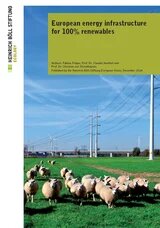European energy infrastructure for 100% renewables
The EU faces critical decisions on energy infrastructure planning and deployment to meet its climate goals, aiming for a 55% emissions reduction by 2030 and net-zero by 2050. A 100% renewable energy system, eliminating fossil fuels and nuclear energy is seen as the most viable solution. However, current EU energy infrastructure policy and planning are insufficient, risking lock-in to outdated technologies. Instead, building towards a decentralised and a 100% renewable energy system should not only support successful decarbonisation but also enhance energy security and citizen involvement. It is recommended to align EU infrastructure planning with a fully renewable future, avoiding investments in nuclear and fossil-dependent technologies, and improving grid infrastructure for a successful energy system transformation.
Product details
Table of contents
Executive summary
Abbreviations
1 Introduction
Why a 100% renewable energy system?
2 Disentangling EU energy infrastructure policy
2.1 Ten-Year Network Development Plan
2.2 EU Action Plan for Grids
Box – Main EU energy infrastructure actors and roles
2.3 Improving the EU’s energy infrastructure planning
3 How to prepare EU energy infrastructure for 100% renewables
3.1 Electricity networks – a new system paradigm
3.2 Gas infrastructure – fossil gas exit is imperative
3.3 Hydrogen – remaining high uncertainty
3.4 Carbon Capture, Transport and Storage – largely incompatible with a 100% renewable energy system
4 Policy recommendations
References
